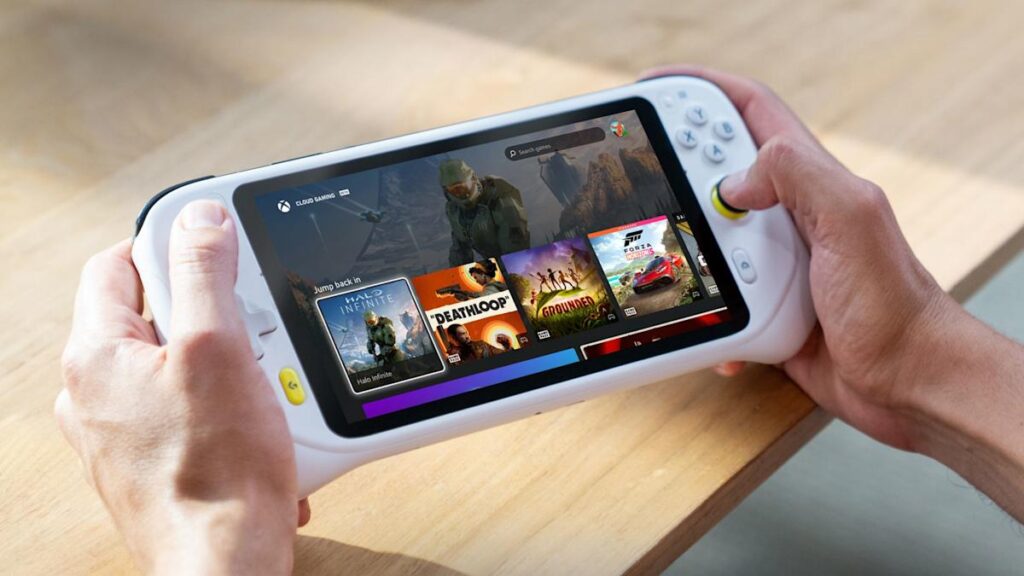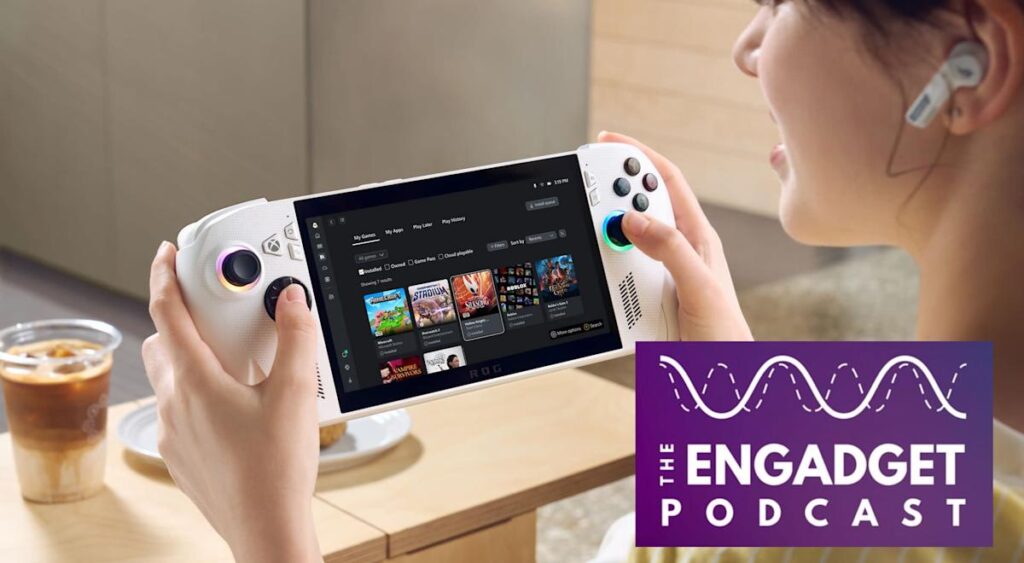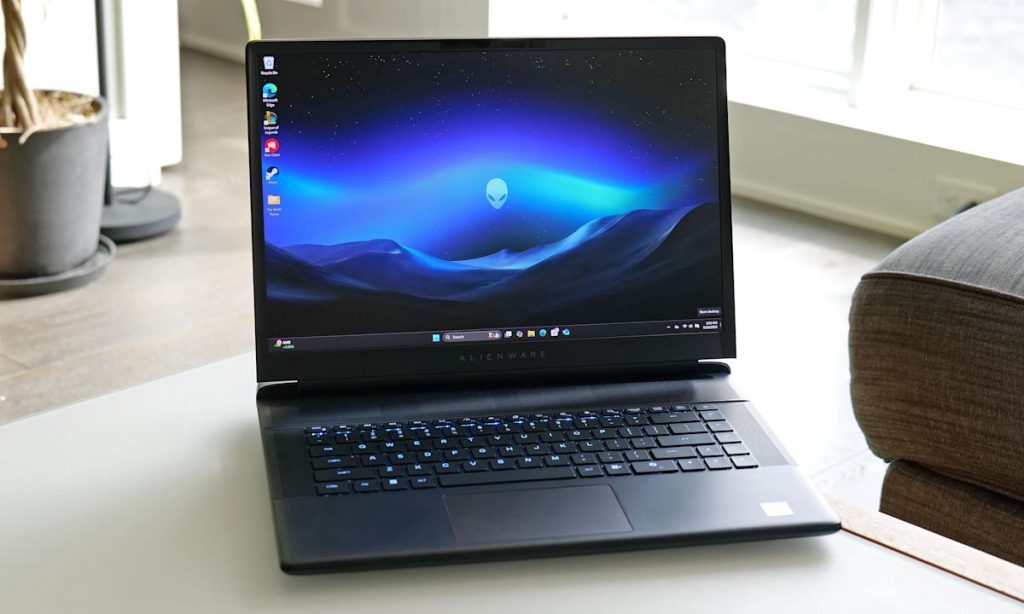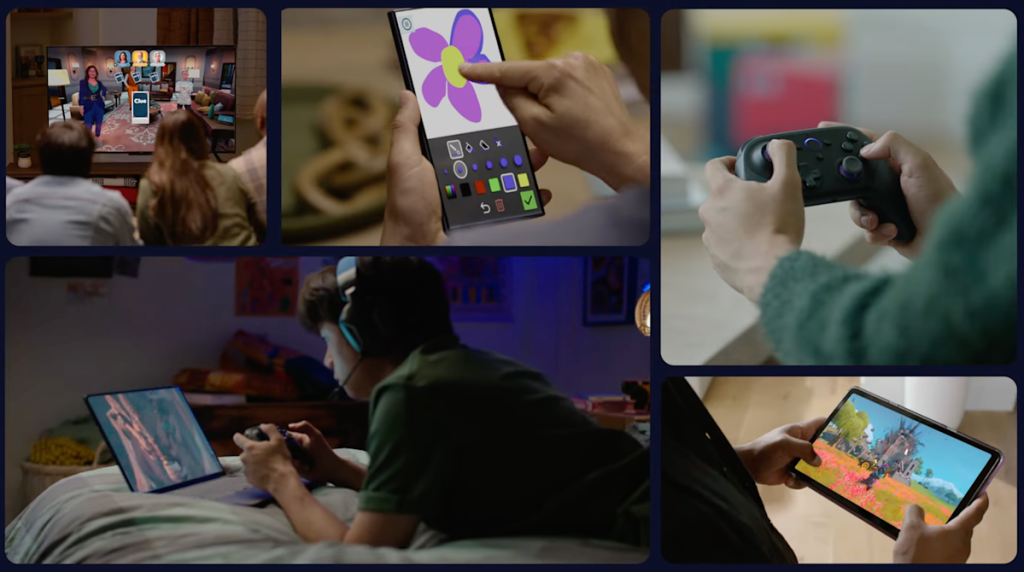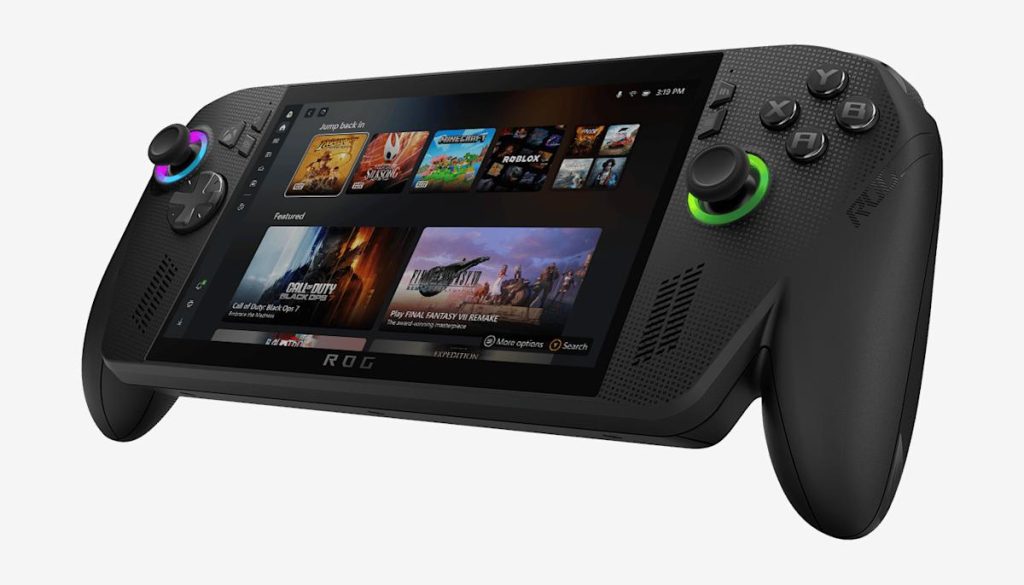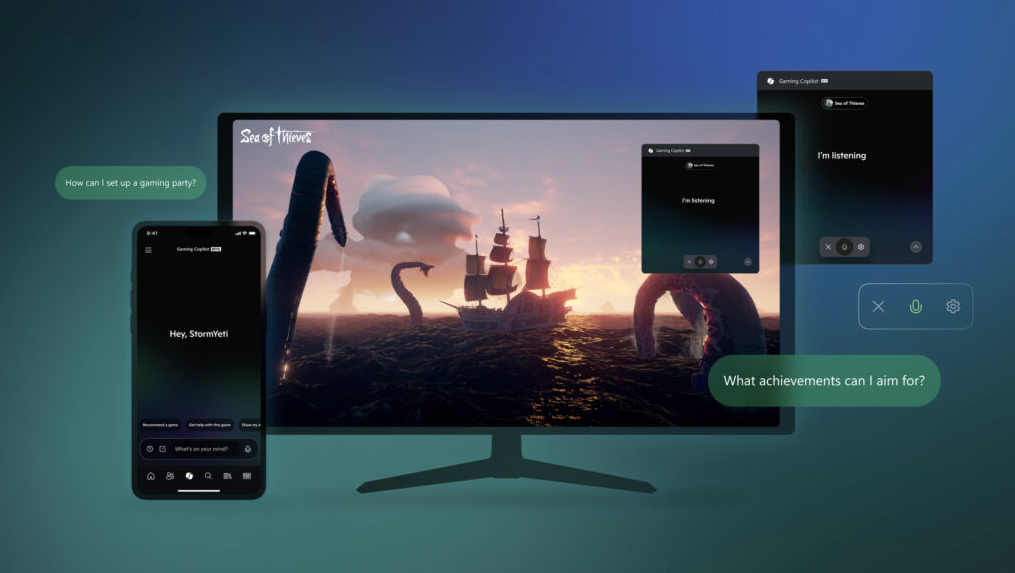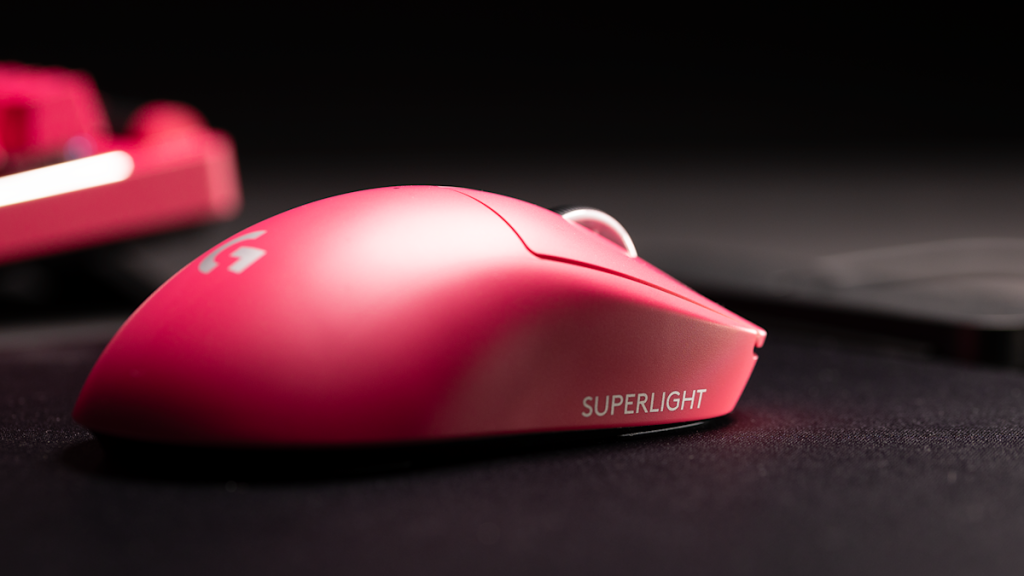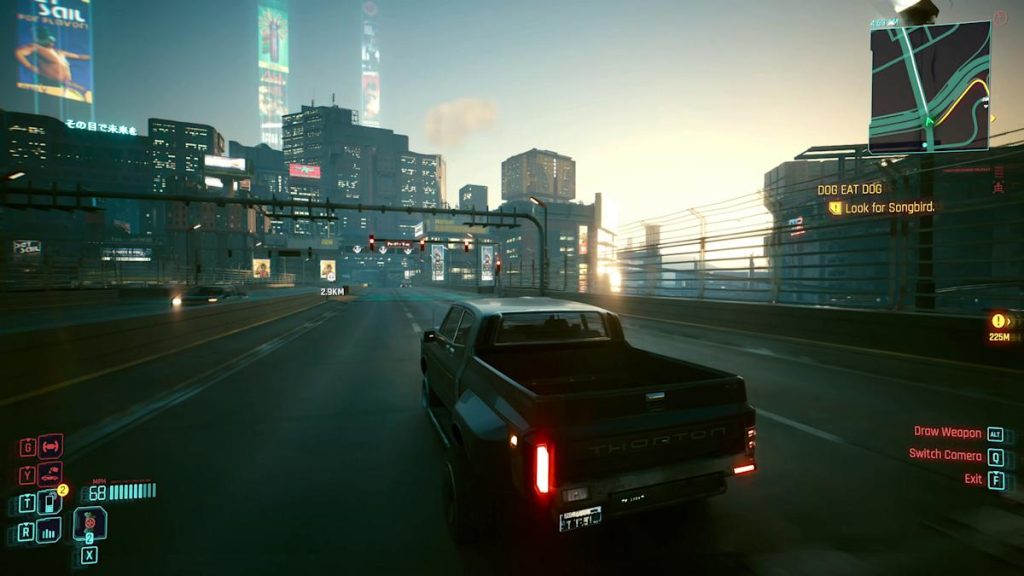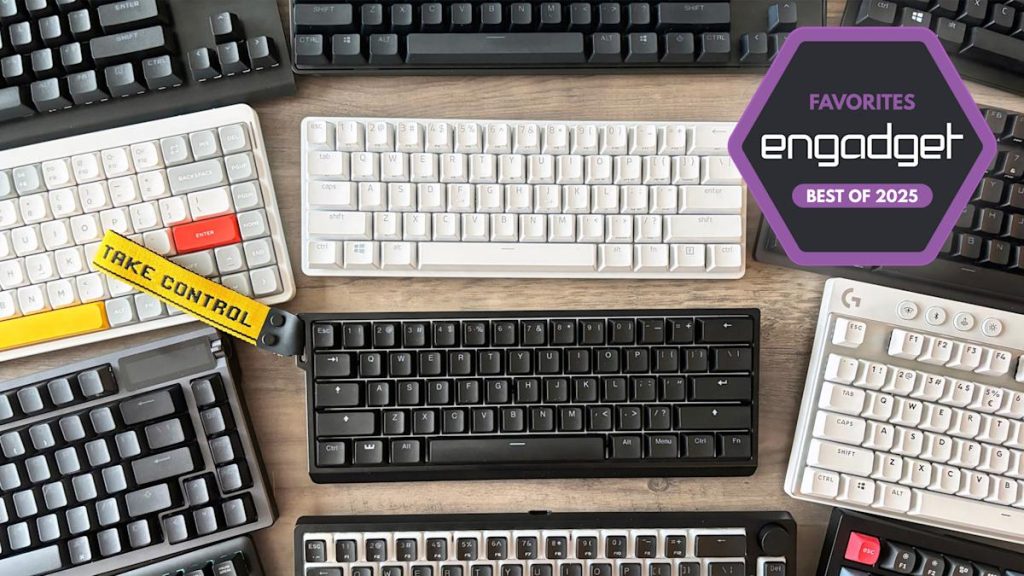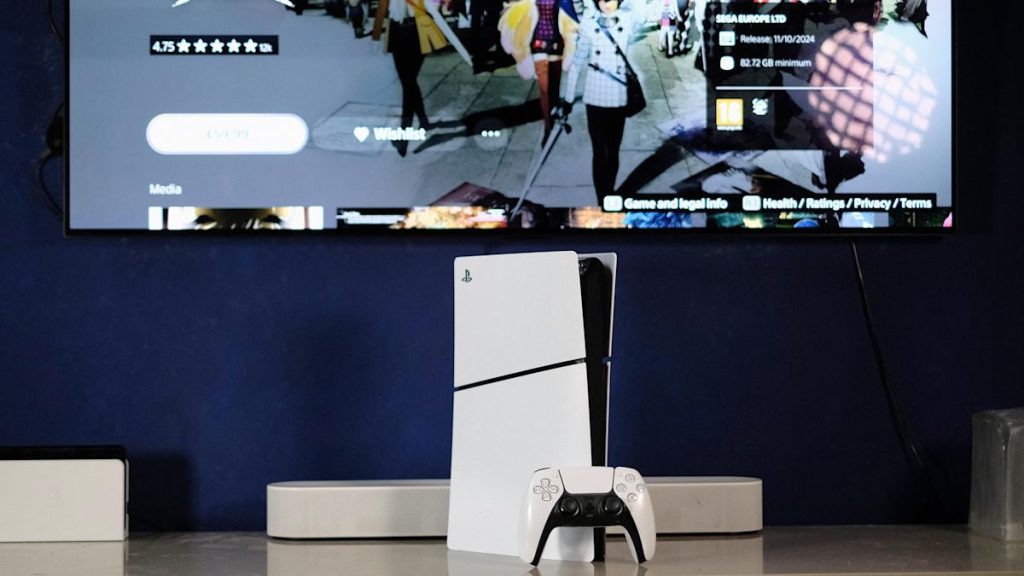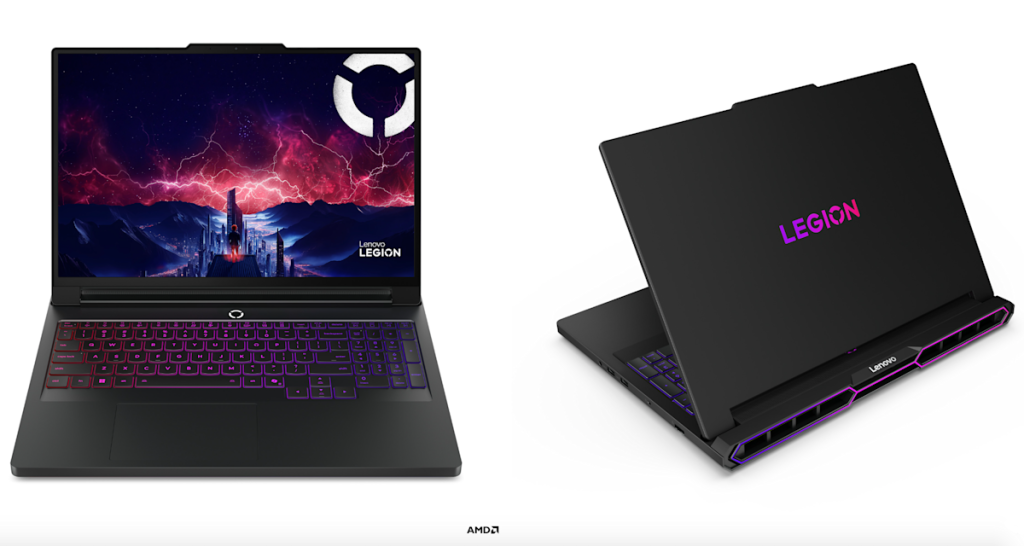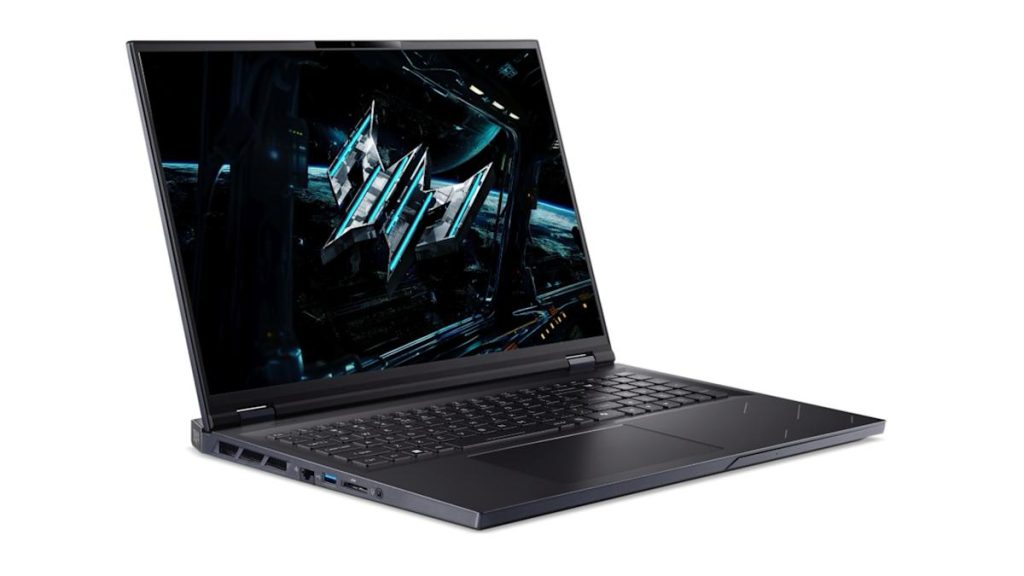The best gaming mouse in 2025
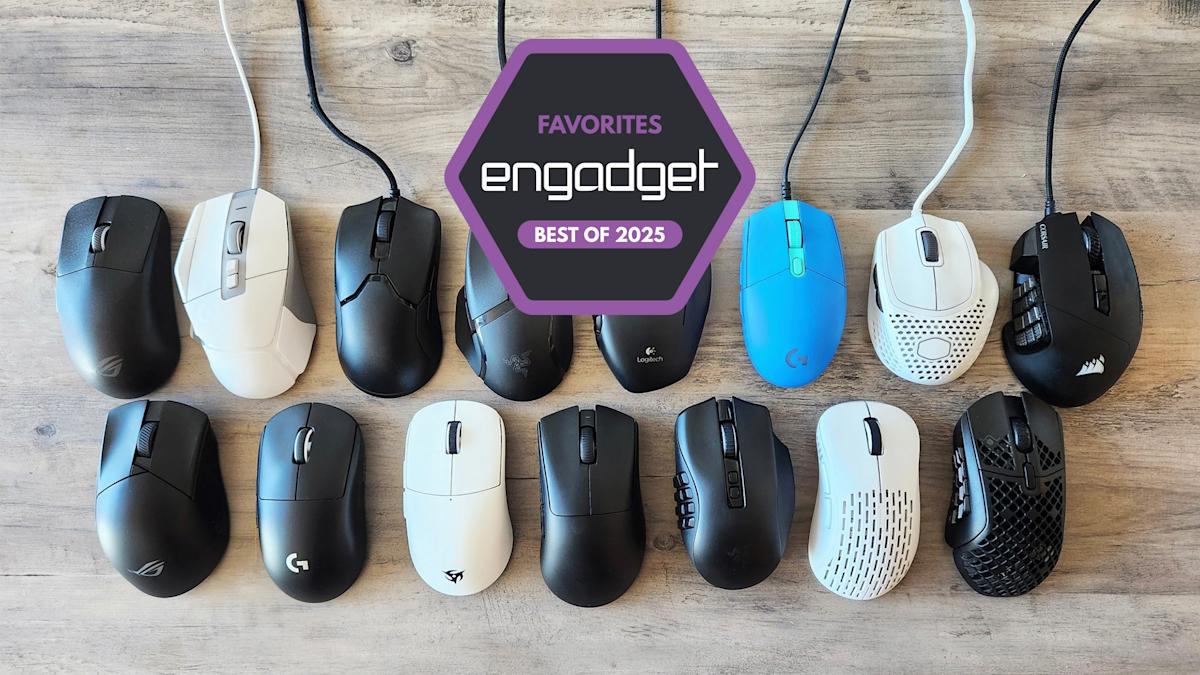
No gaming mouse will magically stop you from getting destroyed in Counter-Strike or Call of Duty, but the right pick can give you a greater sense of control while making your downtime more comfortable. In truth, which one is “best” for you comes down to preference: Shape is king, as the mouse nerd adage goes, and everyone’s hands are different. But to make things a little easier, we’ve tested dozens of well-regarded gaming mice over the past couple of years and picked out a few options that have glided above the rest. After playing countless hours of CS2, Overwatch 2, Halo Infinite, Final Fantasy XIV and more PC games, here are our picks for the best gaming mice you can buy, broken down by shape and use case. We’ve also included some general advice to keep in mind during your search.
The best gaming mice
Connectivity: Wireless, wired (USB-C) | Shape: Symmetrical | Weight: 54 grams | Dimensions: 5 x 2.51 x 1.57 inches | Sensor: Razer Focus Pro 35K Optical Sensor Gen-2 | Switches: Razer Optical Mouse Switches Gen-3 | Maximum polling rate: 8,000Hz | Programmable buttons: 6 | Battery life (rated): Up to 95 hours at 1,000Hz
If money is no object, the best gaming mouse with a symmetrical design that we’ve tested is the Razer Viper V3 Pro. It costs a hefty $160, but it’ll give you little to complain about if you play a ton of competitive PC games and can stomach the price.
With its lightly grooved sides, noticeable but not aggressive hump and gentle flare-outs toward the back, the Viper V3 Pro’s shape should be comfortable for a wide range of hand sizes and grip types. It’s a bit on the wider side, and it probably works best with a claw or palm grip, but it’s not so large or tall that it can’t accommodate fingertip grippers. The main mouse buttons are contoured in a way that gives your fingers a natural resting place, and there are little ledges on either side to subtly nudge them to the right spot when you’re scrambling in-game. Put another way, this is one of the safer shapes we’ve tested.
The Viper’s build quality is excellent. It’s impressively light at 54 grams, which makes it a breeze to flick around in fast-paced games, yet its matte plastic frame isn’t covered in dust-inviting holes like many other options around the same weight. We’ve seen zero hints of creaking, flexing or rattling after months of testing. The finish picks up some finger smudges but is grippy and delightfully soft to the touch. The main click buttons use durable optical switches but aren’t especially loud. Though they aren’t quite as full or crisp as the absolute best mechanical switches, they’re still snappy to press, neither too firm nor too light. The two programmable side buttons are well-sized and easy to reach. The scroll wheel, meanwhile, is tight and quiet, with clearly defined steps and a textured finish.
Performance, as is the case with many high-end gaming mice these days, is effectively flawless. Razer’s Focus Pro 35K Optical Sensor Gen-2 — say that five times fast — is basically overkill from a technological perspective but makes the mouse exceptionally accurate and consistent all the same. It’s aided by amply-sized, smooth-gliding PTFE feet and a rock-solid connection to an included “HyperPolling” dongle. The latter lets the mouse reach a maximum polling rate of 8,000Hz, but as noted below, few people will actually noticed any benefit from jumping that high. Mostly, it’ll just zap battery life: Razer says the Viper V3 Pro can get up to 95 hours at 1,000Hz, which is fine for this market and roughly consistent with our experience, but that drops to just 17 hours at 8,000Hz.
If the price didn’t make it obvious, the Viper V3 Pro is for gaming enthusiasts. As such, it gives up some of the perks you’d find on more mainstream mice: There’s no RGB lighting or Bluetooth, while the power button/DPI switcher is located on the bottom of the device to make it harder to hit by accident. Since the device uses a special dongle instead of a traditional receiver, it still requires you run a separate USB-C cable from your PC or gaming laptop. You can connect over that cable when the battery is low, thankfully, but it’s relatively thick. And while Razer’s Synapse software makes it simple enough to adjust settings, it’s something of a resource hog. It’s also Windows-only. These are all nitpicks, though. The Viper V3 Pro is outstanding, and it should feel right at home in the hands of committed FPS players.
- Exceptional performance
- Superb build quality
- Comfortable for most grip types and hand sizes
- Expensive
- Bit of a fingerprint magnet
- Thick charging cable
Connectivity: Wireless, wired (USB-C) | Shape: Symmetrical | Weight: 41 grams | Dimensions: 4.64 x 2.4 x 1.5 inches | Sensor: PixArt PAW3395 | Switches: Omron Optical | Maximum polling rate: 8,000Hz (with optional dongle) | Programmable buttons: 5 | Battery life (rated): Up to 75 hours at 1,000Hz
The Hitscan Hyperlight is a fantastic alternative to the Viper V3 Pro for those who want something smaller and less expensive. It has a similarly safe shape with a modest centered hump, only its sides are a little straighter toward the top. The main difference is that it’s thinner and much shorter, with a noticeably lower button height, so it’s best suited to those with smaller hands and/or fingertip or claw grippers. If you have bigger hands and use a palm grip, it won’t be as accommodating as our top pick.
That said, it’s a fair bit lighter, weighing just 41 grams. That makes it a breeze to quickly swipe around, though part of why the Hyperlight is so… hyperlight is because it has large cutouts on its bottom. This exposes some of the mouse’s electronics to potential dust and debris on your desk. That said, we’ll take this sort of design over mice with holes in the top shell, since you’ll almost always keep your mouse face-down anyway.
The rest of the Hyperlight’s design is totally sturdy, with no looseness or rattling when you give it a shake. The matte plastic finish is nicely crisp, and we dig the minimalist aesthetic of the thing. We also love its Omron optical switches, which have a lovely bounce to them and create a deeper, more even tone than the Viper V3 Pro’s main clicks. Overall performance is exceptional — as is the case with most modern gaming mice — and the PTFE feet move smoothly, though you have to install them yourself. The scroll wheel has clearly defined notches as well, though it can get a little loud with heavier spins. The side buttons feel and sound cheaper than those on the Viper, too, and battery life is a bit shorter (albeit still fine) at 75 hours or so. The included cable could also stand to be more flexible, though it’s certainly usable.
Hitscan is a fairly new US-based company and the Hyperlight is its first product, so you’re taking a little leap of faith here. But other reviewers we trust have also been impressed, and the user feedback we’ve seen around the web has been overwhelmingly positive. The price helps: At $90, it’s not cheap, but it’s well below other premium options like the Viper V3 Pro (You can buy a dongle that enables 8,000Hz polling rate support for $25 more, but you don’t need it.) If you want a smaller performance mouse and can live with the hole-y underside, it’s superb. Note that Hitscan sells it in batches, though, so you may run into stock issues at some point.
- Comfortable for fingertip and claw grips and smaller hands
- Excellent optical switches
- Lightweight
- Decent value
- Holes in baseplate leave interior open to dust and debris
- Fairly short for palm grips with larger hands
- Cable could be more flexible
Connectivity: Wireless, wired (USB-C) | Shape: Right-handed | Weight: 56 grams | Dimensions: 5 x 2.67 x 1.73 inches | Sensor: Razer Focus Pro 45K Optical Sensor Gen-2 | Switches: Razer Optical Mouse Switches Gen-4 | Maximum polling rate: 8,000Hz | Programmable buttons: 6 | Battery life (rated): Up to 150 hours at 1,000Hz
If you want a premium gaming mouse with a more ergonomic shape, get the Razer DeathAdder V4 Pro. It packs most of the same strengths as the Viper V3 Pro in a taller, slightly wider and more dramatically flared design that’s tailored to right-handed users. Most people with medium to large hands should find it a natural fit with a palm or claw grip, though it’s probably a touch too fat for smaller-handed folks and fingertip grippers. This kind of shape isn’t as easy to whip around as the Viper, but its high, sideways-sloping hump should provide a more relaxing place to rest your hand over the course of the day.
Many of the things we like about the Viper V3 Pro are included here as well. It’s lightweight at 56 grams, and it has a similar soft-touch finish that’s pleasantly smooth without being too slick. The PTFE feet are a bit smaller but still glide reliably. There’s a new sensor — the Focus Pro 45K Gen 2 — but performance is still virtually flawless all the same. The notched scroll wheel is raised a bit higher, though it’s still quiet and suitably tight. Battery life is better, though: Razer says the DeathAdder can last up to 150 hours at 1,000Hz (or 22 hours at 8K). That seems about right based on our weeks of testing.
Compared to the last-gen DeathAdder V3 Pro — our previous pick in this spot — there’s more space between the side buttons, which makes it easier to avoid misclicks. To improve long-term reliability, Razer also says it’s reinforced the mouse’s internal structure while adopting an optical encoder for the scroll wheel instead of a mechanical one, which are traditionally more failure-prone. We’ll need time to see how effective those changes really are, but so far we’ve felt no signs of creaking or flexing. The scroll wheel also uses a full-size switch instead of a typical side-button-style switch, which helps middle clicks feel tighter than they do on most other gaming mice. Maybe most conveniently, there’s a new dongle with a more evenly weighted base, which keeps it from twisting over on your desk. It also has LED lights to inform you about the mouse’s battery level, polling rate and connection quality.
The main click buttons are still well-sized and snappy to press, though the optical switches underneath are louder and sharper-sounding than what you get with the Viper V3 Pro. The right-click button in particular is higher-pitched than the left. It’s not crazy loud, and some will enjoy the clearer sense of feedback. But if you live with other people that are sensitive to these kinds of sounds, they may get a little annoyed. Other than that, our only other real point of contention is the price: The DeathAdder costs even more than the Viper at $170. But if you’ve got the cash and prefer an ergo shape, it is a bleeding-edge device for competitive play.
- Top-shelf performance
- Comfortable for those with medium to large hands
- Lightweight yet sturdy design
- Better battery life than Viper V3 Pro
- Expensive
- Not ideal for smaller hands
- Switches may sound too resonant for some
Connectivity: Wireless, wired (USB-C) | Shape: Right-handed | Weight: 55 grams | Dimensions: 4.81 x 2.55 x 1.63 inches | Sensor: Razer Focus X 26K Optical Sensor | Switches: Razer Optical Mouse Switches Gen-3 | Maximum polling rate: 8,000Hz (with optional dongle) | Programmable buttons: 6 | Battery life (rated): Up to 100 hours at 1,000Hz
The , which costs $100, is an excellent alternative to the V4 Pro if you want something cheaper and more compact. It doesn’t give up the rechargeable battery, cutout-free shell and soft coating of the pricier Pro model, and while its sensor and optical switches are technically older, it still performs wonderfully. Its battery life rating is actually five hours higher than the Viper at 1,000Hz, plus it has a built-in storage compartment for its USB receiver. It’s lightweight at 55 grams, and if anything some may prefer the sound of its main click buttons compared to the DeathAdder V4 Pro, as they’re a bit less resonant. The major difference is that it’s smaller, with a lower-profile scroll wheel and a marginally shorter hump. The V4 Pro’s updated internals may make it more durable over time, but if your hands are on the smaller side and you want an ergonomic shape, we wouldn’t object if you grabbed the cheaper model instead.
- Lighter and more affordable than DeathAdder V4 Pro
- Smooth, grippy finish
- Decent value
- Smaller size isn’t as friendly to larger hands as DeathAdder V4 Pro
- Short and fairly stiff charging cable
- Naggy software
Connectivity: Wired (USB-A) | Shape: Symmetrical | Weight: 49.5 grams | Dimensions: 4.65 x 2.38 x 1.46 inches | Sensor: PixArt PAW3950 | Switches: Kailh GX | Maximum polling rate: 8,000Hz | Programmable buttons: 6 | Battery life (rated): N/A
If you don’t mind connecting over a cable, our favorite wired gaming mouse with a symmetrical design is the Endgame Gear OP1 8K V2. It weighs just 50 grams and has a simple design with flat sides, no holes and a reasonably-sized hump sloping down the back. It’s a bit smaller and more narrow than most mice we’ve tested, so it’ll be comfiest with a claw or fingertip grip, though a palm grip can also work in smaller hands. The whole thing is incredibly sturdy, with no flex or rattle, while the smooth matte plastic coating gives a fair bit of grip. The built-in cable is light, flexible and cleverly titled upwards at the base of the mouse, all of which helps reduce any dragging sensation as you throw your hand around.
The OP1 8K V2 uses mechanical switches, but the mouse is designed in a way that makes them (relatively) easy to swap out in a worst-case scenario. In general, the device’s openness to customization is commendable — there are readily exposed screws on the bottom and a screwdriver, optional side grips and larger PTFE feet in the box.
By default, the main clicks are on the stiffer side but fast to actuate and noticeably crisp. You can actually set these switches to use a “speed mode” that reduces click latency even further, but either way the buttons are easy to spam. The right mouse button on our unit does sound a little sharper than the left, but the difference isn’t severe and you can pop in quieter switches on the cheap if you want a different noise profile. The notched scroll wheel and two side buttons are well-tensioned, too. The latter feel somewhat hollow, but they’re hard to hit by accident. Compared to its predecessor, this V2 update also includes a dustproof encoder for the scroll wheel, which should make it a little more durable over time.
Sensor performance is predictably excellent; we saw no accuracy or motion delay issues across a range of games. With its light weight, fast clicks and smooth stock skates, everything about it feels tailor-made for snapping around in esports-style games like Counter-Strike 2 that prioritize quick reactions. The mouse also supports polling rates up to 8,000Hz — that’s still far from essential, but it’s at least easier to turn on when there’s no battery drain to worry about. We also like Endgame Gear’s configuration software, which looks like something out of the Windows 95 era but is simple to grok and takes up next to no resources.
At $90, this definitely isn’t the cheapest wired mouse, but it still costs less than most wireless high-performance options. The more pressing issue may be that it could fall out of stock from time to time, as Endgame Gear is a relatively small company out of Germany.
- Fast to click and flick
- Sturdy, ultralight design
- Light and flexible cable
- Hardware is customizable
- A bit small for large hands
- Side buttons feel somewhat hollow
- Occasional stock issues
Connectivity: Wired (USB-A) | Shape: Right-handed | Weight: 101 grams | Dimensions: 5.11 x 2.95 x 1.65 inches | Sensor: Razer Focus Pro 30K Optical Sensor | Switches: Razer Optical Mouse Switches Gen-2 | Maximum polling rate: 1,000Hz | Programmable buttons: 11 | Battery life (rated): N/A
It’s a few years old, but the Razer Basilisk V3 remains our favorite wired gaming mouse with an ergonomic design. This one is more aggressively contoured than “ergo” mice like the DeathAdder V4 Pro, with a large rubberized thumb rest, long main buttons and a rounded, moderately-sized hump running down its middle. It’s fantastically comfy for palm grippers with medium- to large-sized hands, but it’ll also play well with claw grips. Those who prefer a fingertip grip or just have smaller hands will likely find it too chunky, however.
The design as a whole feels robust; there’s some minor flexing on the bottom-right side when you press down hard, but you’d have to go out of your way to notice it. The matte plastic finish is pleasingly textured and sufficiently grippy. The cable is plenty flexible, while the PTFE feet glide smoothly. We also dig the fun-but-not-garish RGB lighting around the mouse’s underside and scroll wheel. There are 11 customizable buttons in total, including two easy-to-reach side buttons and a dedicated “sensitivity clutch” that lets you momentarily drop to a lower DPI for moments where you may need to aim more precisely. The latter will be particularly tough for the smaller-handed to reach comfortably, though.
The Basilisk V3 uses older optical switches than our other Razer top picks, but we haven’t had any durability issues after a couple years of testing. While main clicks aren’t nearly as fast as those on the Endgame Gear OP1 8K V2, they strike an agreeable balance between firmness and speed. They aren’t all that loud, either. Similar to the Viper V3 Pro, the buttons are grooved in a way that naturally invites your index and middle fingers.
The scroll wheel might be the weakest element: It has clearly defined steps and an easily identifiable texture, but it’s fairly loud and a bit wobbly. That said, it can tilt side-to-side — which helps explain the wobbliness — and there’s a built-in toggle that lets you swap between a normal ratcheted scroll and a free-spin mode. That can be handy outside of games — say, when you need to scroll through a giant document or Excel sheet.
Razer’s Synapse software is still naggy with updates and Windows-only, but it makes customizing DPI levels, macros and RGB effects simple enough. You can save up to five different profiles to the mouse itself, though your lighting customizations won’t carry over.
We haven’t had any major issues with sensor accuracy, either, but at roughly 100 grams, the Basilisk V3 is obviously heftier than the ultralight mice we highlight above. While you absolutely can go off in Counter-Strike or Valorant with it, the mouse’s weight and wide frame mean it’s not expressly designed for games like those. It also can’t go above a 1,000Hz polling rate. In many ways, this is the exact opposite of the OP1 8K V2, a device that feels designed from the ground up for competitive fare. Instead, the Basilisk V3 makes sense for righties who want a comfy and reliable mouse they can turn to for more casual gaming across genres. Razer sells it for $70, but since it’s usually available for less than $50 at third-party retailers these days, you can consider it our pick for the best budget gaming mouse as well.
It’s worth noting that Razer has a slightly refreshed model called the Basilisk V3 35K. That one comes with a technically improved sensor and newer optical switches, though the weight and overall shape are virtually identical. Given that we didn’t have many issues with the tech inside of original V3, we’d still recommend getting the older version while it’s still in stock and available for less. If you see the 35K model on sale for a similar price, though, feel free to get that instead.
- Super comfortable for medium to large hands
- Well-built, with flexible cable
- Versatile scroll wheel
- Good value
- Too heavy to be ideal for FPS games
- Too bulky to be ideal for small hands
- Scroll wheel is noisy
- Naggy software
Connectivity: Wired (USB-A) | Shape: Right-handed | Weight: 108 grams | Dimensions: 4.98 x 2.48 x 1.57 inches | Sensor: PixArt PMW3391 | Switches: Omron D2FC-F-K | Maximum polling rate: 1,000Hz | Programmable buttons: 17 | Battery life (rated): N/A
If you want a mouse specifically designed for MMO and MOBA games, get the Corsair Scimitar RGB Elite. It does the most important thing any MMO mouse can do, which is let you access several in-game actions with minimal effort. That’s thanks to its 12 programmable side buttons, all of which deliver a comfortable, firm-but-not-stiff sensation when pressed. Two of the panel’s four button rows are textured, which makes them easier to distinguish without having to look down. Uniquely, you can physically reposition this side panel with an Allen key included in the box, so if you find the buttons difficult to reach by default, you can address that. Either way, having a host of buttons right under your thumb makes it much easier to play MMOs like Final Fantasy XIV or even single-player RPGs like Baldur’s Gate 3, which ask you to navigate multiple “hotbars” of commands at any given time.
Like most MMO mice, the Scimitar RGB Elite is on the larger and heavier (108g) side, but it’s not the bulkiest model we’ve seen. Its shape should be accommodating to palm and claw grips, and most hand sizes. The middle has a rounded, not-overly-aggressive hump, while the bottom is more gently sloped than rivals like Razer’s Naga lineup. The overall construction feels well-built, with a smooth matte finish, a grippy pinky rest and decent PTFE feet. Internally, its optical sensor (the Pixart PMW3391) isn’t exactly advanced these days, but it’s more than consistent enough for MMOs and MOBAs, which don’t rely on precise, quick-twitch movements. It has no significant issues with latency, either.
However, there are a few downsides. The braided cable feels durable but somewhat stiff. The scroll wheel is grippy and accurate enough, but it’s a touch too recessed between the main buttons, and it could be firmer. Those main buttons never feel mushy, but they use mechanical switches, so they carry more of a long-term durability risk than optical alternatives. (Corsair rates them at 50 million clicks.) And Corsair’s iCue software is, frankly, the worst: You can use it to customize key bindings, assign macros, adjust the (mild) RGB lighting and save profiles to the mouse, but figuring out how is wildly unintuitive.
Nevertheless, the MMO gaming mouse market doesn’t really have one killer option these days. At a price that often hovers in the $60 to $75 range, the Scimitar RGB Elite offers better value than most. If you hate cables, Corsair sells a wireless version of the device too.
- Cleverly textured side buttons make MMOs easier to navigate
- Generally comfortable and well-built
- Decent value relative to MMO mouse market
- Stiff cable
- Scroll wheel is too recessed
- Annoying software
Connectivity: Wireless, wired (USB-C) | Shape: Symmetrical | Weight: 35 grams (with included “dot” feet; 37 grams with standard feet) | Dimensions: 4.55 x 2.4 x 1.44 inches | Sensor: Pulsar XS-1 | Switches: Pulsar Optical Switch | Maximum polling rate: 8000Hz | Programmable buttons: 5 | Battery life (rated): No rating provided
The $130 Pulsar X2 CrazyLight is worth considering over the Viper V3 Pro and Hitscan Hyperlight if you’re committed to a claw or fingertip grip and spend all your time playing twitchy shooter games. We’re starting to wonder just how many prefixes for the word “light” these mouse companies can slap onto their products, but the CrazyLight’s name is appropriate, as it weighs a mere 37 grams with its standard PTFE skates. It’s another short symmetrical model, comparable to the Hitscan Hyperlight in overall footprint, but it has a flatter hump down the center. That means it won’t really fill out medium-to-large hands with a palm grip. But it’s comfortable for everything else, and its slight frame feels natural in games that demand snap reactions. You know how baseball players will sometimes swing a heavier bat when they’re on deck to make their actual bat feel faster? This is sort of like the mouse equivalent of swinging that lighter bat.
A reliable sensor and easy-gliding feet help, while the clicky optical switches are fast without feeling too sensitive. (Expect a sharper tone, though.) The scroll wheel is well-tuned and precise. There’s no creaking or flexing despite the low weight, and it’s all coated in a pleasing matte plastic. It also comes in a few fun colors. The two side buttons are somewhat thin, and Pulsar’s software is a little clunky. This is also another one with an open bottom side, so it’s more susceptible to dust than the Viper V3 Pro. Nevertheless, while the CrazyLight isn’t quite as welcoming to all hands as Razer’s mouse, it does what it sets out to do.
- Incredibly lightweight design that’s great for fingertip and claw grips
- Excellent performance
- Well-built
- Holes in baseplate leave interior open to dust and debris
- Not built for palm grips with larger hands
- Side buttons aren’t the best
Connectivity: Wireless, wired (USB-C) | Shape: Symmetrical | Weight: 55 grams | Dimensions: 4.8 x 2.6 x 1.7 inches | Sensor: PixArt PAW3395 | Switches: Raesha Optical (90 M) | Maximum polling rate: 1,000Hz (4,000Hz with optional dongle) | Programmable buttons: 5 | Battery life (rated): Up to 100 hours at 1,000Hz
The Pulsar Xlite V3, meanwhile, is a quality alternative to the DeathAdder V4 Pro if you want a right-handed design. It has a similar contoured shape, so it’s great for palm and claw grips, and it’s about as light. We like its rigid outer shell and snappy optical buttons, though the smooth plastic coating isn’t as grippy as the DeathAdder’s finish and the side buttons aren’t as crisp.
Like the CrazyLight, the Xlite V3 also has cutouts across the bottom, making it more susceptible to gunk. Still, this is a light, comfortable and highly responsive ergo mouse. While it has a list price of $100, Pulsar has often sold it for $70 (pre-tariffs) in recent months; with that discount, it’s a strong buy.
Just note that there’s a revised version of this mouse called the Xlite V4. We haven’t tested that one for ourselves, but it’s not a major refresh, primarily adding a newer sensor and 8K polling support (with an optional dongle) in the same shape. It’s also available in a mini size option. If the Xlite V3 goes out of stock, or if you see the two mice available for the same price, just grab the V4. But the V3 is the better value as long as it remains in stock at a discount.
- Solid value
- Well-suited for palm and claw grips
- Holes in baseplate leave interior open to dust and debris
- Coating could be grippier
Other gaming mice we’ve tested
The Lamzu Maya X.
(Jeff Dunn for Engadget)
Note: The following is a selection of especially noteworthy mice we’ve tested, not a comprehensive list of every single model we’ve ever put through its paces.
Lamzu Maya X
The Lamzu Maya X is a great symmetrical mouse and a close competitor to the Razer Viper V3 Pro. It’d be next in line for an honorable mention, as it has most of the things we like about the Hitscan Hyperlight and Pulsar X2 CrazyLight: a smooth matte finish, a sturdy frame, easy-gliding feet, accurate performance, a tight scroll wheel and a lightweight design (46g). It’s close in size to the Viper V3 Pro, but it’s cheaper at $120, plus it uses the superior Omron optical switches we praised for the Hyperlight above. Its configuration software is also entirely accessible over the web (for Chromium-based browsers at least), so you don’t have to download anything extra to your PC.
However, we think the Viper’s longer frame and ever-so-slightly more concave sides keep it just a little comfier for larger hands and palm grips. Its side buttons are still more satisfying to press and its finish provides more grip. The Maya also follows the “leave the entire bottom of your mouse exposed” trend to reach its lower weight. And though the software being web-based is great, it is very much a Chinese Gaming App with grammatical errors and weird formatting quirks. The reality is that fine margins separate high-end gaming mice nowadays — the Maya X is good, but we prefer the Viper at this size, while the Hitscan and CrazyLight are better for smaller hands.
Logitech G Pro X Superlight 2
The Logitech G Pro X Superlight 2 is a close rival to the Razer Viper V3 Pro for those who want a no-frills, high-end wireless gaming mouse. It has a similar “potato”-style shape, its tracking is similarly tremendous and its optical-mechanical switches have a distinct feel. Unlike the first Superlight, it also charges over USB-C. But the Viper’s main clicks are crisper and more pleasant-sounding, its side buttons aren’t as mushy and its scroll wheel is both firmer and grippier. It’s also slightly lighter.
The Logitech G Pro X Superlight 2.
(Photo by Jeff Dunn / Engadget)
Logitech G Pro X Superlight 2 DEX
The G Pro X Superlight 2 DEX is the ergonomic version of the Superlight 2, packing the same sensor and hybrid switches in a chunkier, right-handed shape. We found its right side to flare out a little too much, though, often leaving our pinky finger in a less-than-comfortable position. Those with average-sized hands may find its center hump to be too aggressive for consistent aiming as well. The DeathAdder V4 Pro’s main buttons are still more invitingly curved and consistent to press beyond that, while its coating isn’t as slippery. The DEX’s scroll wheel is tighter, and all of its internal tech is great, so by no means is this a poor choice. But at $180 after a tariff-related price hike, there are better values out there.
Razer Viper V3 HyperSpeed
Much like the DeathAdder V3 HyperSpeed, Razer’s Viper V3 HyperSpeed is a lower-cost variant of the top-end Viper V3 Pro. (Confusing, we know.) At $70, it’s a solid value. Its symmetrical shape and soft-touch finish are virtually identical to the more premium model, and though it technically has a worse sensor, the drop-off is hardly noticeable. The main trade-off is that it’s heavier (about 82g), as it requires a AA battery for power. That doesn’t make it outright hefty, but you can feel the difference in twitchier games. It uses older mechanical switches and smaller PTFE feet, too, plus it lacks a port for connecting a cable. So it’s not as close to its big sibling as the mid-tier DeathAdder. Some may prefer that its DPI button is located on the top of the mouse, though, and its simpler on-off switch is nice.
Razer Basilisk V3 X HyperSpeed
The Razer Basilisk V3 X HyperSpeed is a more affordable wireless version of the Basilisk V3 with the same comfortable shape and layout, plus a quieter scroll wheel. Because it requires a AA battery for power, though, it weighs around 115g. That’s not great for fast-paced games. The scroll wheel can’t tilt left or right, either, nor can it switch between a ratcheted and free-spin mode. It also uses less durable mechanical switches and only supports one onboard profile. All that said, it’s a decent value at $70.
Left to right: the Logitech G309 Lightspeed, the Razer Viper V3 HyperSpeed and the Pulsar X2 V2.
(Photo by Jeff Dunn / Engadget)
Pulsar X2 V2
The $100 Pulsar X2 V2 is another decent option if you want a high-performing symmetrical mouse for less than the Viper V3 Pro. It’s available in mini and standard sizes: The former is a technically weightier (51 grams) version of the X2 CrazyLight, while the latter is that but bigger. Both have sturdy plastic frames, though they’re still meant for claw or fingertip grips first. They also have cutouts across their undersides. As with the Xlite V3, Pulsar now sells a newer model called the X2 V3, though that’s a minor refresh with an updated sensor and 8K polling rate support. The latest model is worth getting instead when the X2 V2 isn’t discounted, but we prefer the Hitscan Hyperlight and its more pleasing clicks to both in this price range.
Pwnage Stormbreaker
The Pwnage Stormbreaker is a superlight (51g), exceptionally sturdy and premium-feeling wireless mouse that’s largely made from magnesium alloy instead of plastic. It performs about on par with our top picks, which is excellent, while its right-handed, medium-sized shape should suit palm and claw grippers well. (If you know BenQ’s Zowie EC line, the shape is basically that.) However, the extensive cutouts all over the sides and top shell are noticeable in the hand and make the device more susceptible to debris buildup than the DeathAdder V4 Pro. While the buttons and scroll wheel are impressively tight, the main clicks are a bit too stiff and high-pitched for our liking. We also noticed more connection stutters than usual on our test PC, and its $169 MSRP is expensive.
BenQ Zowie U2
Speaking of BenQ, its Zowie U2 is a perfectly decent alternative to the Viper V3 Pro that costs about $30 less. It tracks great, it’s lightweight (60g) and its mechanical clicks feel fine. It also comes with two receivers, one of which doubles as a handy charging dock. It has a symmetrical shape with sides that curve inwards and a decently-sized hump at the back; BenQ says it’s designed for claw grips, and it is indeed good for that, but it should also work for fingertip grippers with larger hands or palm grippers with smaller ones. Alas, the scroll wheel is gratingly loud, and the plastic coating picks up smudges and hand oils like it’s its job. There’s also no configuration software, which can make adjusting settings a little cumbersome, though some may prefer not having to install any extra bloat on their PC. This mouse also maxes out at a 1,000Hz polling rate — that’s not a big deal in practice, but it’s technically behind many other mice in this price range.
The Pwnage Stormbreaker (left) and BenQ Zowie U2 (right).
(Photo by Jeff Dunn / Engadget)
Logitech G309 Lightspeed
There isn’t much wrong with the Logitech G309 Lightspeed in a vacuum. It’s built like a tank, its sensor is accurate and its egg-like shape should feel OK, if not superlative, in most hand sizes and grip types. It uses the same hybrid switches as the G Pro X Superlight 2, so the clicks don’t sound great but are fast. It also has a supercapacitor inside, which gives it effectively infinite battery life if you own Logitech’s (costly) PowerPlay charging mat. That’s neat! Most people, though, will need to pop in a AA battery, which pushes the weight up around 85 grams. As most of that weight is felt toward the back, the mouse can feel relatively clunky to fling around in FPS games. We’re not fans of the ugly recess across the middle of the device, either, as it creates a space for dust to collect. At a $90 MSRP after a recent price hike, the G309 is still OK for casual types who’ll only buy from a name brand. But unless you use PowerPlay, it doesn’t do much to stand out from other options around the same price.
HyperX Pulsefire Haste 2
The HyperX Pulsefire Haste 2 is a decent wired model for those who want a flatter ambidextrous shape. It performs well for competitive play, and it’s plenty light (53g) thanks to a clever design with cutouts on the bottom that are covered by the mouse’s label. But the Endgame Gear OP1 8K V2 is better-built and more comfortable, so we think it’s worth the extra cash. The Razer Viper 8KHz was another solid (albeit heavier) option with a similar shape, but that mouse has been discontinued.
A few more gaming mice we’ve tested. Left to right: the Glorious Model I 2 Wireless, the Razer Cobra Pro, the Razer Basilisk V3 X HyperSpeed and the HyperX Pulsefire Haste 2.
(Photo by Jeff Dunn / Engadget)
HyperX Pulsefire Haste 2 Core Wireless
The HyperX Pulsefire Haste 2 Core Wireless is a budget-friendly wireless variant of the Haste 2. It may be OK if you must go wireless and only have $50 to spend, as its shell feels sturdy and its low-profile shape is well-suited to claw or fingertip grips. It’s a little weightier than the wired Haste 2 (about 70g) since it runs on a AAA battery, but that’s nowhere near heavy. That said, its main buttons feel somewhat mushy, and we observed a few sensor hiccups and inconsistencies, particularly when we had HyperX’s Ngenuity software open.
HyperX Pulsefire Haste 2 Pro
We had persistent, debilitating connection issues with the HyperX Pulsefire Haste 2 Pro on both Windows 11 and macOS over multiple days, so we can’t recommend it.
Logitech G502 X
The Logitech G502 X has a generally similar shape as the Razer Basilisk V3, with a lower weight (84g) and more side buttons. However, its main buttons are noisier, it’s a slightly more awkward fit for most hands and its rubber cable isn’t as flexible. It’s also more expensive after Logitech’s round of price increases earlier this year, plus it lacks RGB.
The HyperX Pulsefire Haste 2 Pro.
(Jeff Dunn for Engadget)
Logitech G203 Lightsync
The Logitech G203 Lightsync is our former budget pick. It’s often available in the $20 to $30 range these days, and at that price it’s still fine if you want a competent gaming mouse for as little money as possible. You can feel the cost cutting in its rubbery cable and mushy scroll wheel, however, and its shape is a bit too small and flat for larger hands. The Logitech G305 Lightspeed is a wireless model with more or less the same shape, but it requires a AA battery to work and thus weighs just over 100g. It, too, feels somewhat outdated in 2025.
Razer Cobra
The Razer Cobra is another value-oriented wired mouse with a compact shape. It’s much lighter (58g) than the Logitech G203, with a more flexible cable and optical switches instead of mechanical ones. It’s usually priced between $35 and $40, though, so the G203 typically costs less. The Endgame Gear OP1 8K V2 still feels higher-quality across the board, but if you have smaller hands, use a fingertip grip and want a cheaper symmetrical mouse, go for it.
The Logitech G203 Lightsync
(Jeff Dunn / Engadget)
Alienware Pro Wireless Gaming Mouse
The Alienware Pro Wireless Gaming Mouse tracks well, glides smoothly and weighs just under 60 grams without having any holes in its outer shell. It’s shaped like a Logitech G Pro X Lightspeed 2 with wider sides, so it should be comfortable for palm or claw grippers with large or medium-sized hands. Its matte finish is a touch too slippery, however, and its main buttons aren’t as consistent or satisfying to press as our top picks (despite using Omron optical switches). Clicking them toward the top is too soft, clicking them toward the back is too stiff. The back side button sounds hollow beyond that, and Alienware’s configuration software chews up far too much memory. All of this is overpriced at $150.
Glorious Model I 2 Wireless
There’s a fair amount to like about the Glorious Model I 2 Wireless: an ergonomic shape that’s reminiscent of the Basilisk V3/G502 X but lighter at 75g, four customizable side buttons, the ability to connect over a USB receiver or Bluetooth, a smooth scroll wheel and tasteful RGB lighting, all for a list price of $100. However, its honeycomb-style design and mechanical switches both raise concerns about its long-term durability.
Glorious Model D 2 Wireless
The Glorious Model D 2 Wireless also has holes all over its shell yet doesn’t perform or feel significantly better than other mice around the $100 mark. Other reviews say it has latency issues as well.
Glorious Model D 2 Pro + Model O 2 Pro
The ergonomic Model D 2 Pro and symmetrical Model O 2 Pro aren’t loaded with cutouts, meanwhile, but their main buttons are relatively loud and sticky-feeling.
The Alienware Pro Wireless Gaming Mouse.
(Jeff Dunn for Engadget)
What to look for in a gaming mouse
Wired vs. wireless
Buying a wireless gaming mouse used to mean sacrificing a certain level of responsiveness, but thankfully, that’s no longer the case. Over the last few years, wireless connectivity has improved to the point where the difference in latency between a good wireless model and a tried-and-true wired gaming mouse is barely perceptible.
Note, however, that we’re strictly talking about mice that use a 2.4GHz connection (over a USB dongle), not Bluetooth. Many of the best wireless gaming mouse models support both connection options, which is great for travel, but Bluetooth’s latency is generally too high to be reliable for gaming.
Going wireless still has other trade-offs, too. Battery life is improving all the time, but with their higher performance demands and RGB lighting, most wireless gaming mice usually don’t last as long as “normal” wireless models. You shouldn’t expect more than a few days of power from a rechargeable gaming mouse you use regularly. Some gaming mice offer wireless charging too, which makes things easier. Good wireless gaming mice usually come at a much higher cost than their wired counterparts as well.
That’s not to say the premium is never worth it: Who wants yet another cable on their desk? You may need a wireless model if you hate the feel of “cable drag” or if your gaming PC is located in an awkward spot. Many wireless gaming mice come with a cable you can hook up in a pinch as well. But if price is your primary concern, a good wired mouse may be a better value.
Comfort and grip types
Everyone’s hands are different, so at the end of the day, calling one mouse “more comfortable” than another is mostly subjective. Ensuring your comfort is the most essential step when buying any mouse, though, so we’ve done our best to consider how each device we tested works with smaller, average-sized and larger hands alike.
We also considered how each peripheral accommodates the three grip styles most people use while holding a mouse: palm, fingertip and claw. As a refresher, a palm grip is when your whole hand rests on the mouse, with your fingers resting flat on the main buttons. A fingertip grip is when you steer the mouse solely with the tips of your fingers, with your palm not in contact with the device at all. A claw grip is when your palm only touches the back edge of the mouse, with your fingers arched in a claw-like shape toward the buttons.
In general, most people use a palm grip, which tends to offer the greatest sense of control — though, depending on the size of your hand, you may need your mouse to be a specific length to use it comfortably. A fingertip grip can allow for more rapid movements, while a claw grip is something of a balance between the two. Switch and Click has a good breakdown if you’d like more detail, but we’ve noted above if a mouse isn’t well-suited for a particular grip style. For what it’s worth, yours truly is a claw gripper most of the time.
Build quality and design
A good gaming mouse feels sturdy and won’t flex or creak when used strenuously. We valued mice without any overly sharp angles or grooves that could be awkward for most people to hold. And while most gaming mice have plastic exteriors, not all plastic is created equal, so we looked for finishes that were smooth, not too slick and capable of withstanding the sweaty palms that often come with competitive gaming sessions.
The gaming mouse market is mostly split between two design styles: ergonomic and ambidextrous. Ergonomic mice are almost always made with right-handed users in mind and often feature dedicated thumb rests. Ambidextrous mice are more symmetrical and designed to be used with either hand (though they may not have extra buttons on both sides). Whether an ergonomic or ambidextrous gaming mouse works best for you is largely a matter of personal preference.
A gaming mouse’s feet, meanwhile, should provide a consistent glide and reduce the friction between your mouse and mouse pad beneath it as much as possible. For the best performance, look for feet made from PTFE (aka Teflon). All feet will eventually wear down, but many mice come with spares, and most manufacturers sell replacements if needed.
As for flashy RGB lighting, it’s a nice bonus, but little more than that. Still, if you’ve already kitted out your setup with RGB, having a mouse with adjustable lighting effects can add to the gaming experience (and more consumer tech could stand to do things for pleasure’s sake). More practically, some mice let you assign custom lighting settings to separate profiles, which can make it easier to see which one you’re currently using.
Weight
Gaming mice have gotten lighter and lighter over the years, with some recent releases weighing less than 30 grams. Your mouse doesn’t need to be that feathery — anything under 80g is still reasonably light, and it’s not like a 100g mouse feels like a total anchor. Regardless, a lightweight mouse makes it easier to pull off fast movements repeatedly, with less inertia. That said, some players still enjoy a little bit of bulk in their gaming mouse (relatively speaking), especially with games that aren’t as reliant on twitchy reactions.
To reach those lightest weights, some manufacturers have released gaming mice with “honeycomb”-style designs, which feature an array of cutouts in the outer shell. These mice can still perform great, but having a bunch of holes that expose the internal circuit board to possible sweat, dust and detritus isn’t the best for long-term durability. If a mouse must have cutouts, it’s better if they’re relegated to the bottom of the design, where debris is less likely to enter the frame.
Switches, buttons and scroll wheel
A growing number of gaming mice use optical switches instead of mechanical ones. Since these involve fewer bits making physical contact, they should generally be more durable and less prone to unwanted “double-clicks” over time. Many gamers still find good mechanical switches more satisfying to press, so it’s not like you should avoid mechanical mice altogether. They just carry a little more long-term risk in a vacuum.
Since most people will use their gaming mouse as their mouse-mouse, you may want main buttons that have a softer feel when pressed, with enough travel to make inadvertent actuations less frequent. But even that is a matter of preference: You may want lighter buttons if you play games that call for constant clicking. We also looked to testing from sites like Rtings to ensure each mouse we recommend has a sufficiently low click latency, meaning your clicks will register with minimal lag.
Beyond the standard click panels, a good gaming mouse should also have programmable buttons for quick macros or shortcuts. For most games, shoot for at least two extra buttons on the thumb-side panel that are easy to reach and difficult to press by accident. Many mice have more buttons, which can be a plus, but not if they force you to contort your fingers to avoid hitting them. For MMO mice, having at least 12 side buttons is preferable in order to access as many hotbar commands as possible.
As for the scroll wheel, it should have distinct, ratcheted “steps” that aren’t too resistant but make it clear when you’ve actually scrolled. Its texture should be grippy, and it shouldn’t make a distracting amount of noise when used. The wheel should also be clickable, giving you another input to customize for certain games (e.g., to control the zoom on a sniper rifle).
Sensors and performance
Some are more proficient than others, but generally speaking, the optical sensors built into most modern gaming mice are more than fast and accurate enough for most people’s needs.
While shopping for gaming mice, you’ll see a number of terms related to sensor performance. To be clear, a gaming mouse’s responsiveness doesn’t come down to just one spec. But for clarity’s sake, here’s a rundown of the more noteworthy jargon:
-
DPI, or dots per inch, is a measure of a mouse’s sensitivity. The higher the DPI setting, the more your cursor will move with every inch you move the mouse itself. Many gaming mice advertise extremely high DPIs that top out above 30,000, but that’s largely marketing fluff: Few people play above 3,000, with 800 a common sweet spot. This concept is also referred to as CPI (counts per inch), which is probably the more accurate term, though DPI is used more often.
-
IPS, or inches per second, refers to the maximum velocity a mouse sensor supports. The higher the IPS, the faster you can move the mouse before it becomes incapable of tracking motions correctly.
-
Acceleration goes with IPS. In this context, it refers to how many Gs a mouse can withstand before it starts to track inaccurately.
-
Polling rate is a measure of how often a mouse tells a computer where it is. In general, the more frequently your mouse reports information to your PC, the more predictable its response time should be. Anything at 500Hz or above is fine for casual gaming. A sweet spot for most is 1,000Hz. Many newer mice can go all the way up to 8,000Hz, but you start to see diminishing returns the higher you go unless own a powerful PC and play on a gaming monitor with an especially high refresh rate. Even then, a super-high polling rate is far from essential. Not all games are built with it in mind, plus it leads to much faster battery drain.
-
Lift-off distance is the height at which a mouse’s sensor stops tracking the surface below it. Many competitive players like this to be as low as possible in order to avoid unintended cursor movements while repositioning their mouse.
A screenshot of Razer’s Synapse 4 software.
(Razer)
Software and onboard memory
It doesn’t take long to find horror stories about bugs and other niggling issues caused by gaming mouse software, so the ideal app is one that doesn’t force you to use it all the time. It should let you adjust as many of the aspects above as possible, ideally to several distinct profiles. Preferably, you can save your settings directly to the mouse itself, letting you pick your customizations back up on another device without having to redownload any software. All this is most important on Windows, but Mac compatibility is always good to have.
Warranty and customer support
Most major gaming mice brands offer warranties between one and three years. The longer and more extensive a manufacturer’s program is, the better. This is the case with most consumer tech, but we note it here because the gaming mouse market is particularly flush with products from less-than-household names, many of which you may see hyped up on YouTube, Reddit or elsewhere around the web. A bunch of these more obscure mice are genuinely great, but if you ever buy from a more niche brand, it’s worth checking that some level of customer support is in place. We’ve made sure our picks for the best gaming mice aren’t riddled with an abnormal amount of poor user reviews.
Recent updates
October 2025: The Razer DeathAdder V4 Pro replaces the last-gen DeathAdder V3 Pro as our top ergonomic pick, while the lightly updated Endgame Gear OP1 8K V2 supplants its predecessor as one of our favorite wired mice. We’ve edited a few other blurbs to reflect these changes as well.
June 2025: We’ve added a couple new alternate picks in the Hitscan Hyperlight and Pulsar X2 CrazyLight. We’ve removed the Lamzu Atlantis OG V2 4K as an honorable mention as a result, along with a couple other mice that no longer appear to be available. All other details should be up-to-date. The gaming mouse market remains an extremely busy one, so it’s difficult for us to review everything. That said, we’re currently testing a few other recent releases, and we’re keeping an eye out for potential updates to a couple of our picks from Razer and Endgame Gear.
November 2024: We’ve updated this guide with testing notes on the Logitech G Pro X Superlight 2 DEX. We’ve also added mentions of the Razer Basilisk V3 35K and Pulsar Xlite V4, two recently released updates to a couple of our current picks. We aim to test those more fully, alongside a few others, for our next update.
September 2024: We’ve completely refreshed this guide for late 2024, adding new main picks based on shape alongside notes on several other gaming mice we’ve tested in recent months. We’re now in the process of testing Logitech’s new G Pro X Superlight 2 DEX, a flagship ergonomic mouse that the company announced right as we were putting the finishing touches on this update.


